Some of the most beautiful and badass vehicles on the road are the most difficult to get in and out of without looking like an idiot. The vehicle looks awesome, but you look like a moron. This happens due to a super tall ride height, or very low ceiling height. Sometimes the compact cars are too small for full-sized people, or require contortions that are hard for the arthritic. Here are our picks for the worst vehicles that make getting in and out a pain.
RAM TRUCK 4X4
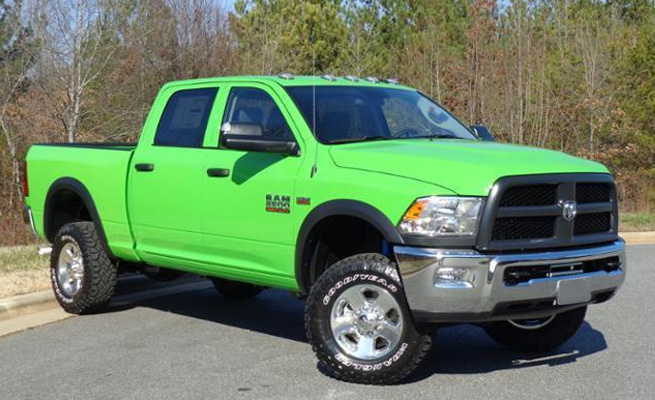
Sure, all the full-size trucks are pretty much the same size: huge. As an example of model bloat, the mid-size Chevy Colorado is the same exterior dimensions as a Silverado from 15 years ago. The Dodge Ram takes the crown though, as it is tallest at 77.5 inches tall, a full 3.5” taller than its Chevy competitor, meaning extra work to step up into the cab. If you’re short, you’re going to have a bad time.
FORD F-650
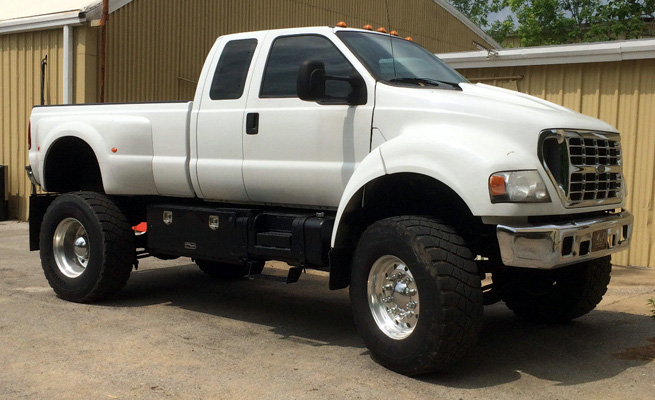
Think the Ram is hard to get into? The Ram 1500 is a class 1 truck, meaning light duty. For the truck newbs, a massive Ram 3500 dually is also shockingly classified as light duty. Based on weight and capability, truck classes increase dramatically in the medium duty class, with heavy duty class 7 and 8 being 18-wheel semi-trucks. The Ford F650 is about as big as you can buy without a Class B commercial driver’s license. This work truck nearly needs a ladder for entry, and even an NBA pro will have to clamber into the driver’s seat.
MCLAREN F1
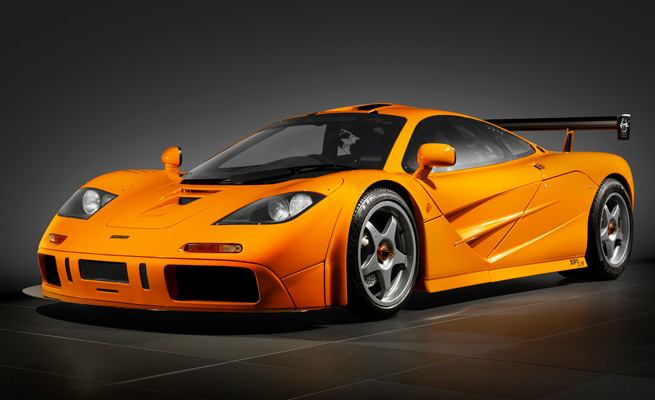
The McLaren F1 is known worldwide as a technological and artistic masterpiece. That doesn’t mean it’s perfect. Yes, the car is gorgeous, the V12 is amazing, and it has stunning capability on track, but is perfectly competent and reliable as a road car. The three passenger seating arraignment makes sense for weight balance, but less sense for ingress and egress. No one looks cool getting into an F1 and doing a crab walk over the passenger seats.
FORD GT
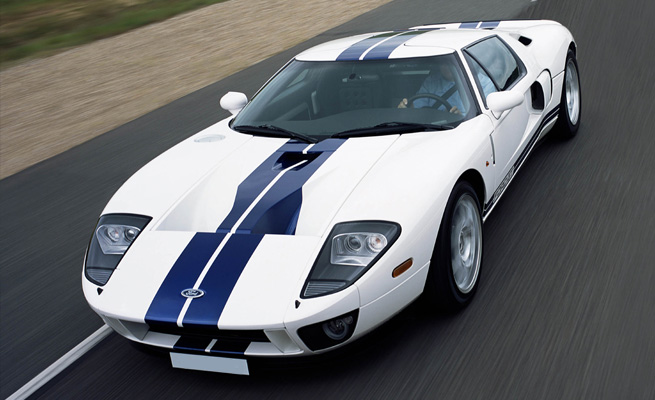
Ford’s 100th anniversary gift to themselves was this gorgeous example of what American manufacturers can do when they try. The mid-engine beauty was based on an evolved design of the classic ‘60s GT40 racecar, which had an extraordinarily low roof height of just 40 inches. The GT is taller, at 44.3” high, but that’s not much help at all. Ford cut the window frame deep into the roof in an effort to help ingress, but you’re still going to hit your head.
GENERAL LEE
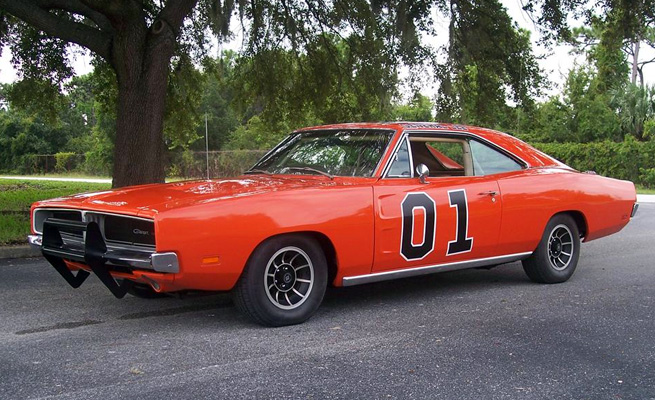
When Bo and Luke aren’t trying to outrun the local constabulary, the General Lee is trying to outrun the Confederate battle flag controversy. Time hasn’t been kind to the redneck action/comedy The Dukes of Hazzard, but the classic Charger is still an awesome car, especially when rallying around muddy backwoods Georgia. Like the old moonshine haulers and NASCAR racers of the era, the doors are welded shut for safety, making entry an interesting combination of jungle gym and Spider Man moves. Several bloopers of the tv series show the Dukes brothers hurting themselves trying to get into the General.
LOTUS ELISE/EXIGE
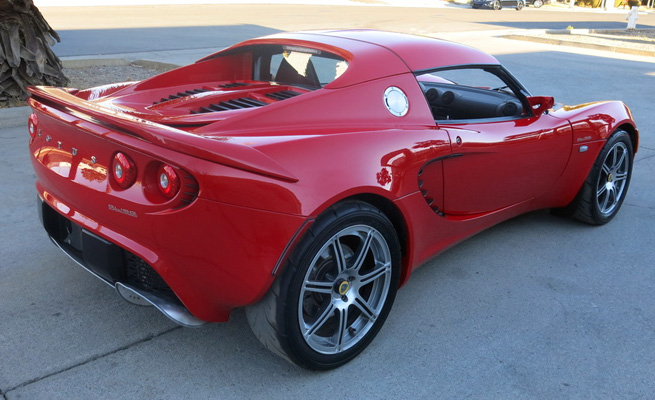
The Elise and hardcore Exige are excellent British track car values. For roughly the price of a Corvette, you can get the most dynamic and engaging driving experience this side of an Ariel Atom. Unfortunately, that light weight comes with a size penalty. If you’re over six feet tall, you will have to remove your shoes and scrunch down a bit. Over 6’3” and you’re looking at driving with your head tilted and yet still touching the roof. If it has a targa, you’ll have to pull it just so you can get in and out.
HONDA S2000
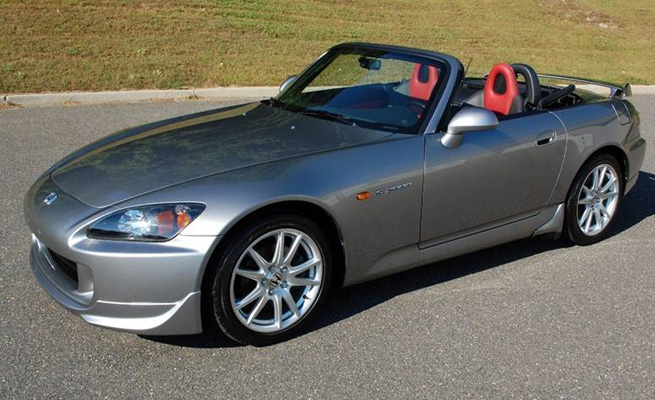
Honda’s premier affordable sports car packed a lot of fun into a small space. With a high reving engine, taut suspension, and affordable price, it was the thinking man’s alternative to a well optioned Mustang GT. Surprisingly, the S2000 has quite a bit of interior room. Unfortunately, the doors are small and the roof rather low, so getting into and out of the S2K means doing your best limbo moves.
LOCAL MOTORS RALLY FIGHTER
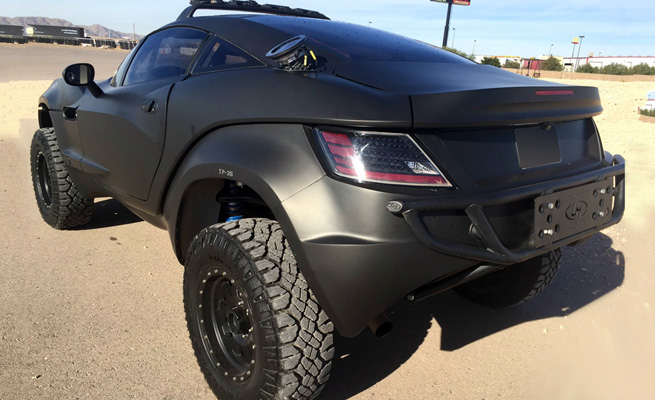
Yes, I love this car and put it into every list I can. Anyway, it qualifies here for a couple of reasons. The Rally Fighter is an excellent off-roader, due in part to its massive ground clearance. Yet it has a sexy sports car body on top of that capable Super Stadium Truck worthy chassis, so it has the usual head clearance issues. When combined, getting into the Rally Fighter means an awkward backwards step up into the cab, while ducking your head, so you can’t really see where you’re going.
MAZDA MIATA
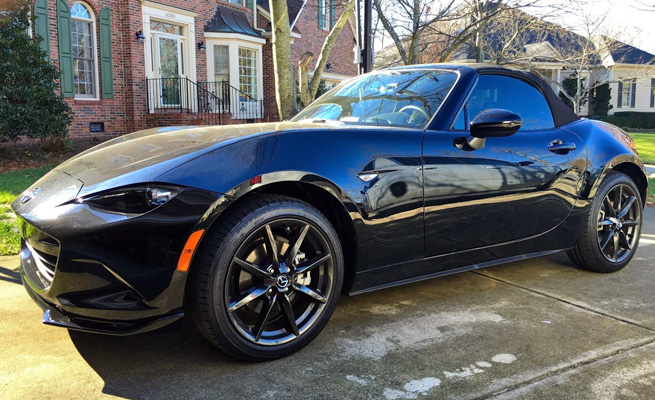
More people would own a Miata if they actually fit in them. The small sports car was designed for a world audience, but test fit by Japanese drivers. Hint: they’re typically shorter and lighter than American drivers. Even on cold days, you will see the many Miata drivers with the top down, their forehead higher than the top of the windshield. Entry with the top up requires a massive ducking and squatting maneuver, and is not sexy at all.
SMART FORTWO
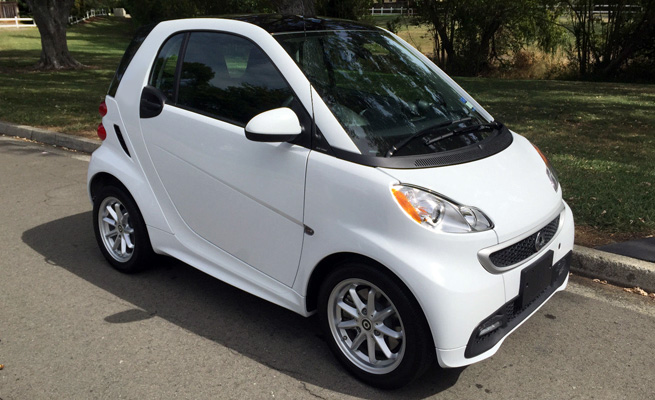
The Smart is a city car that gets some things right, and some things horribly wrong. On the plus side is tiny physical size, for easy traffic negotiation and parking. On the down side, that size means it is off the shopping list for the estimated 30% of Americans that are obese. Compounding this problem is the fact that the Smart is more along the lines of a backpack you strap on, versus a car you get into. The short doors and upright seating limit ingress/egress strategies, and while the headroom is excellent, the hip and shoulder room just isn’t there. Gear selection requires fondling the passenger, so only take passengers you know very well.
Have any personal experience here, or know a vehicle you would recommend as overly difficult to enter or exit? This is a criteria that some auto buyers seriously look at, so let us know what you like and don’t like in the comments below.
WORLDS MOST ICONIC TURBO CARS
WORLDS MOST ICONIC TURBO CARS

Top Gear’s Jeremy Clarkson once humorously said about turbochargers: “exhaust gasses go into the turbocharger and spin it, witchcraft happens, and you go faster.” He’s not exactly wrong, and the mystique of the turbo is felt worldwide. From factory turbo cars, to aftermarket performance upgrades, it seems most gearheads want a turbocharged car. If you’re in the market, here’s our picks for the best of ‘em.
CORVAIR
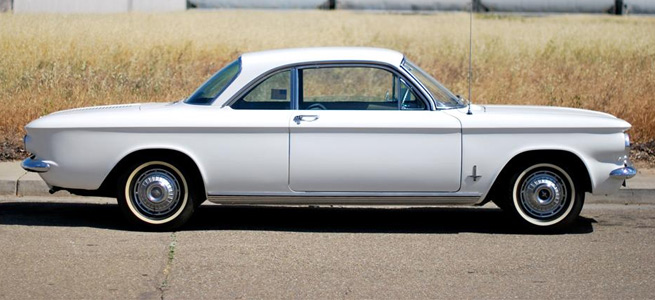
Rear engine, rear-wheel drive. Fully independent suspension at all four corners. Aluminum 2.7L flat-six cylinder topped by a turbo. This lightweight coupe isn’t some expensive classic Porsche, it’s a Chevy. The Corvair introduced American drivers to the turbocharger, and while Americans gave it funny looks, its modifying potential was instantly noted. The turbo Corvair may only have 180 horsepower, but it handled every bit as good as it looked.
COBALT SS
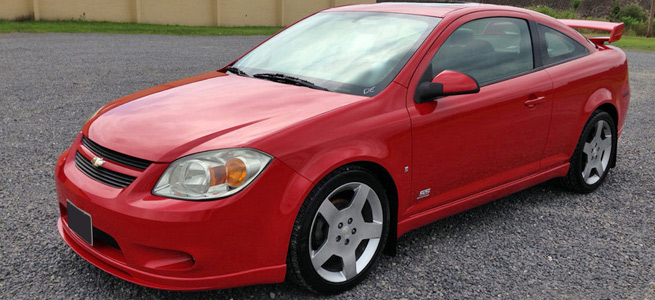
The Cobalt was a massive step up from the hunk o’ crap Cavalier it replaced. Still, that wasn’t saying much. While the N/A SS was a joke, the available supercharged version was much quicker. Even better, in 2008, the Eaton was swapped for a turbo, and power increased to 260 hp and 260 lb/ft. An optional performance package increased power to 290 hp, and with a 5-speed manual, the SS ripped off mid-13 second quarter mile times. The sport compact craze of the last 15 years was over, and it oddly looks like Chevy won.
MKIV SUPRA
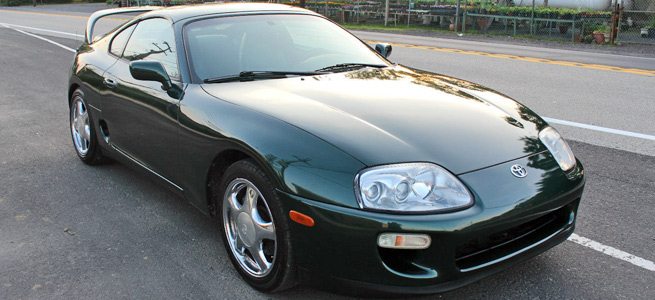
The Supra was very popular with enthusiasts in the ‘80s and ‘90s, and positively BLEW UP when an A80 model was the hero car in 2000’s The Fast and the Furious. Although dated and blobby now, the Supra looked amazing on its release in ’93. The 3.0L twin turbo inline-six made 320 horsepower and 315 lb/ft, the lowly Toyota was able to out-muscle standard Corvettes of the time. The 6-speed is stout, the mods are plentiful, and the stock short block can handle 1,000 rear-wheel horsepower. I’ve seen it done firsthand.
MCLAREN P1
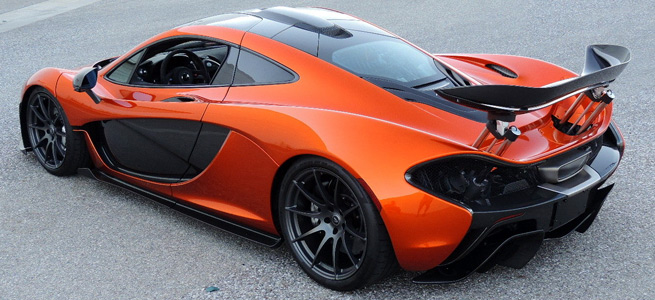
It’s new, but it’s already a legend. The successor to the renowned Mclaren F1, the P1 is even faster on track through brilliant engineering and brute power. The mid-engine V8 sports twin turbos forcing air into its relatively small 3.8L displacement. Running an unreal 35 psi, the engine produces 727 horsepower. Since that obviously isn’t enough, the electric motor provides an additional 177 hp. If you have a Mississippi education, I’ll forgive you for not adding that up to 904 horsepower. It’ll destroy the tires faster than you can read this list.
R35 GT-R
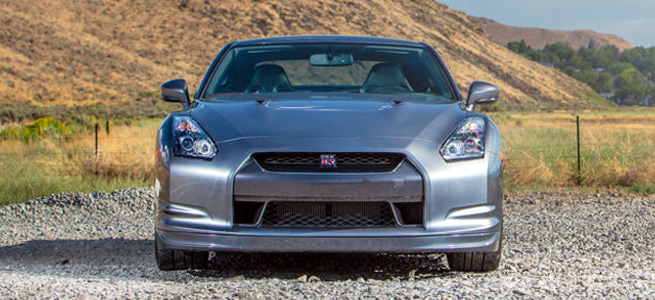
The new Nissan Skyline launched in 2008, and was quite a bit different than previous models. Despite being called just GT-R, the supercar-killing spirit lives on in the current version. The 3.8L V6 doesn’t sound like much, even with twin turbos. With just 478 horsepower at launch, no one expected it to be as quick as the lighter Corvette Z06. As of this writing, the GT-R can be optioned up to 600 hp, and is still break-your-neck quick and unnaturally good through the corners. Yeah, some think it’s ugly, but who cares? All that your better looking competitors will see is Chevy Cobalt coupe, I mean…Nissan GT-R tail lights.
THUNDERBIRD TURBO COUPE
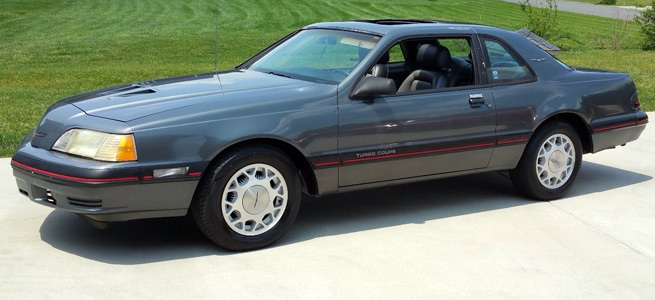
Ford made some interesting vehicles in the 1980s. The downsized Thunderbird somewhat returned to its roots as a personal luxury car. If a Mustang wasn’t your thing, the sporty and luxurious rear-wheel drive T-bird could get it done. The 2.3L powerplant was Pinto sourced, but jazzed up with a turbo and intercooler. Power topped out at 205 horsepower, but then with a Fox chassis, a manual transmission, and a huge aftermarket, the TC is a hidden secondhand gem.
MAZDA RX-7 FD
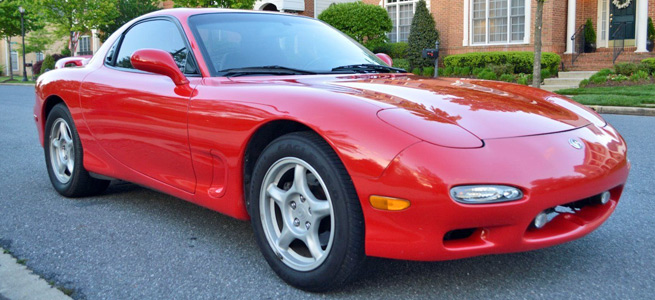
The RX7 was always about affordable fun, but it wasn’t until the third generation FD model that it became gorgeous. The 13B-REW rotary is a weird tiny wonder that operates on snake oil and ground unicorn horn, or something. It also has twin sequential Hitachi turbos, marking the first time this setup hit the mass market. Displacing about 1.3L, the heavily polluting rotary puts out a seriously impressive 276 horsepower, and is one of the few ricers that needs your giant PepBoys 10,000 RPM tach.
XJ220
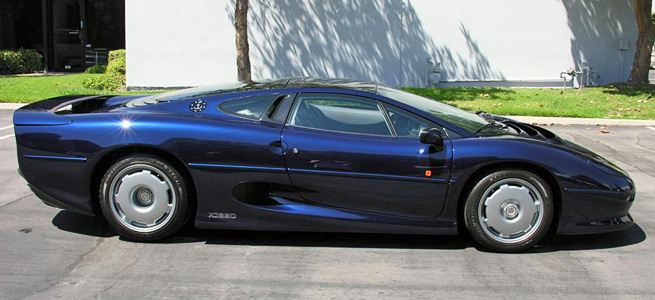
Ah, the ‘80s. Weird times all around, especially within the high-end car segment. Staid Jaguar made a V12 concept in ’88 that the public went positively bananas for, so on a whim they put it into production. In 1992, the XJ220 was released with a 3.5L twin turbo V6. Not the fearsome world-beating powerplant initially presented, so deep pocket buyers never showed much interest. Pansies. The XJ220 was the fastest car in the world at 212 MPH, and held the Nürburgring production lap record for 8 years.
DODGE OMNI GLHS
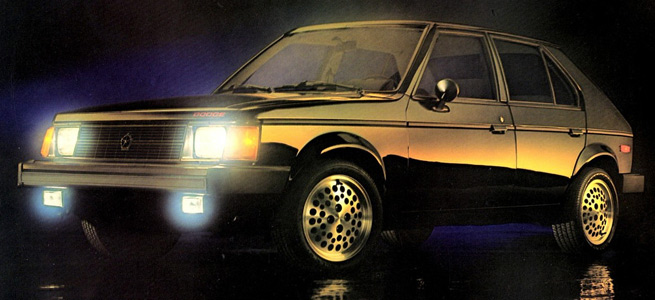
The subcompact Omni was automotive punishment at its finest (or worst). Tiny, boxy, and way underpowered, the car wasn’t appreciated until some guy by the name of Shelby got ahold of it. With a T2 turbo pushing into the 2.2L four cylinder, the tiny little car made a Mustang GT-like 175 horsepower and 200 lb/ft of torque. With a 5-speed, it was a riot to drive, and was quicker than the pony cars of its day.
SAAB 99 TURBO
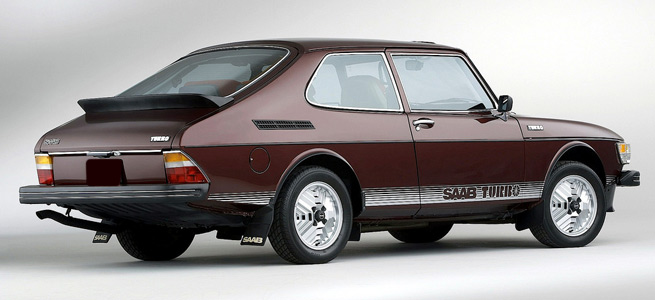
The 99 is the model you think of when you hear “1970s Saab.” With incredibly distinctive “combi coupe” styling, the 99 was the new stylish face of Saab. The fastback-like body was neat, yet the 2.0L four banger was better when warmed by a Garrett turbo. Granted, 143 horsepower isn’t a lot, but it was decent in the flyweight 99, and very comparable for the times. The power was equivalent to a late ‘70s V8, and changed the way we thought about the Swedish brand.
SALEEN S7 TT
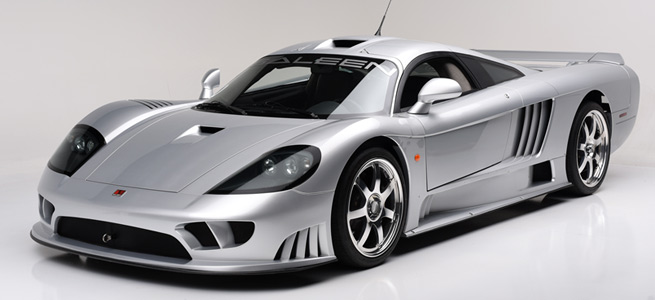
The “regular” Saleen S7 was an incredible machine back in 2000. 550 horsepower was a ton in 2000, when the Cobra had 320 hp, and there was no Z06. The Ford-sourced small block V8 had been punched out to 7.0 liters to make that much power, and became downright crazy with the addition of two turbochargers. Running just 5.5 ps, the 2006 S7 TT blasted out 750 hp, and graced the cover of every car racing game that year. If that isn’t enough, find one with the competition package, and a solid 1,000 hp.
GMC SYCLONE/TYPHOON
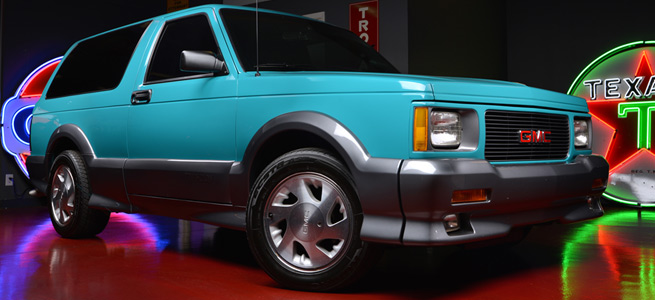
The Sy/Ty trucks are possibly the most unhinged lunacy GM has ever made. The mainstay of GMC’s compact pickup segment, the humble Sonoma was powered by a sizable 4.3L V6 making a sad 170 horsepower. GMC added some stronger components, and a lot of boost, and promoted the Syclone truck and Typhoon SUV to legends. 280 horsepower and a crushing 360 lb/ft of torque driving all four wheels was enough to humiliate low-end Ferraris of the time. In a truck. Imagine if GMC did this today….
300ZX TT
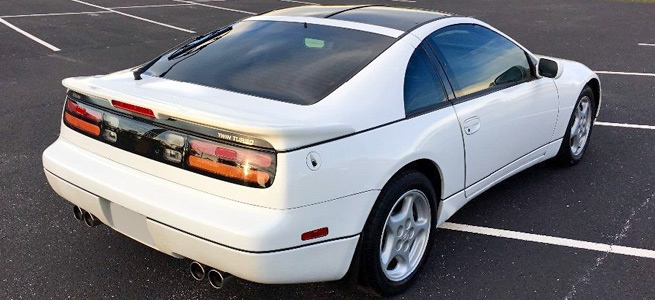
The ‘80s ZX looked embarrassing, but the 1990 version was good enough for Car of the Year. The Nissan fanboys can tell by the engine code that “VG30DETT” is a 3.0L V6 with twin turbos, and it was an impressive engine packed into this sports car. 300 horsepower and 283 lb/ft was a lot in the early ‘90s, and reviewers raved about the solid performance and high quality of the overall car. The price tag eventually killed it though, as Nissan loaded it down with excessive tech like four wheel steering. They’re appreciating, so buy one while you can.
MUSTANG SVO
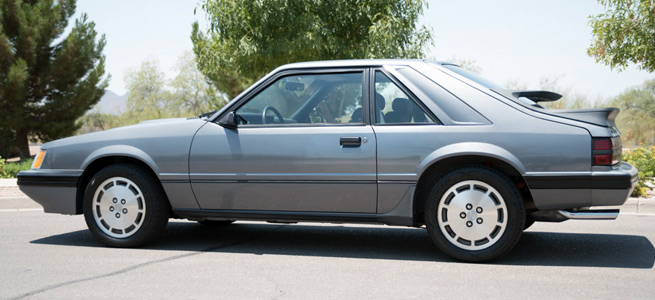
The Mustang is an icon in its own right, arguably as over-hyped as turbocharged marketing. Combine the two, and you have the Mustang SVO. It employed the Pinto’s reliable but underwhelming 2.3L four cylinder, and then threw a turbo at it. With its lightweight and a 5-speed manual, it was every bit a match for the V8 GT. It was like an early SVT Cobra, but with ‘80s crappiness. Still, the SVO is a favorite among ‘stang guys and probably a good bet for atmospheric inflation in the coming years.
LANCER EVO
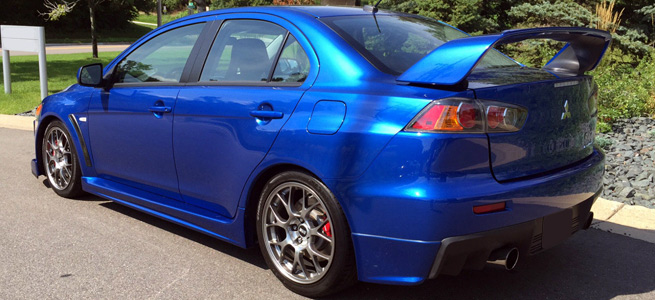
Take a crappy four-door, four-banger economy car, and throw a lot of power at it. Well that’s not exactly the process behind the Evo, as it was designed from the start for WRC. The last generation Evo X (2008 – 2016) made 291 horsepower and 300 lb/ft from a 2.0L four cylinder engine. Driving all four wheels, the Evo X was the all-weather hoon-mobile you need in your life.
WRX STI
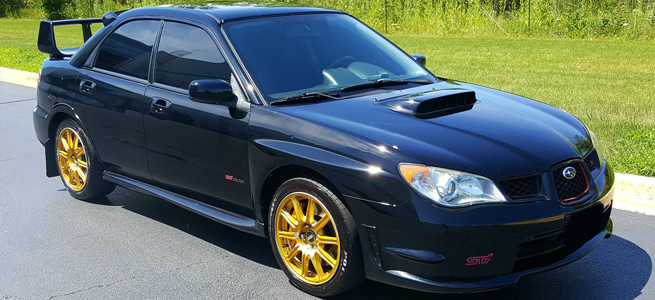
Like the Evo, but more reliable. And uglier. Subaru has never really made pretty cars, but that doesn’t matter since they’re built like an A-10 tank killer, and as charming as Jennifer Lawrence. The STi is built off the compact Impreza, and ditches the economy in favor of speed. The 2.5L EJ flat-four cylinder is larger than the Evo’s, offering more horsepower, torque, and oddly – better fuel economy. The STi is one of the best performance sedans you can buy at any price, and they’re still pretty affordable, if not pretty.
NEON SRT-4
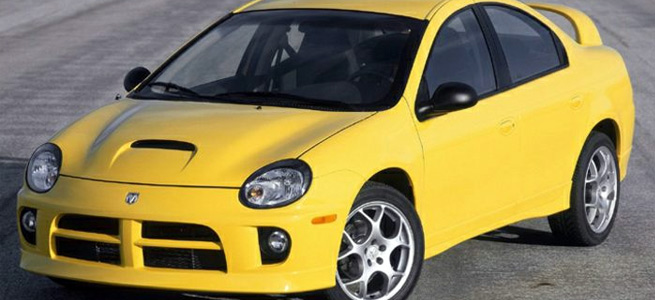
“Nice Neon, dude!” Despite the haters, the SRT-4 was a performance bargain. The base Neon was a surprising handler, and adding a turbo finally took care of its performance deficit. The same 2.4L as the base model was boosted with 14 psi sources from a Mitsubishi turbo to make an official 230 horsepower. Driving the front wheels, the 5-speed SRT-4 was good for 14 flat in the quarter mile, which means the super Neon is likely underrated by about 30 hp.
LOTUS ESPRIT TURBO
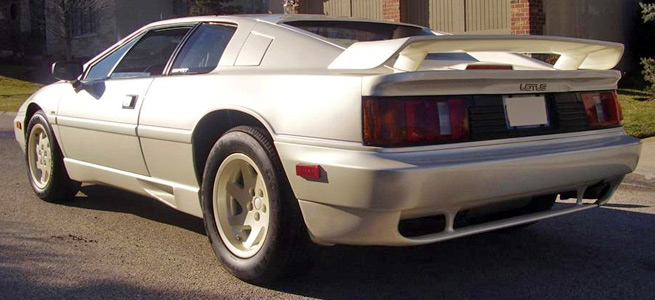
James Bond’s car earned a reputation for being able to do darn near anything, and it’s got “turbo” right in the name. While it’s not the fastest car on here, it is an icon of the 80s and 90s. The 2.2L was boosted up to 215 horsepower in the mid-‘80s, and hit 264 by ’89, making it something of a British IROC-Z, only even less reliable. Still, that sweet wedge shape and 0 to 60 times in the low 5-second range make an Esprit Turbo an excellent second car.
288 GTO EVOLUZIONE
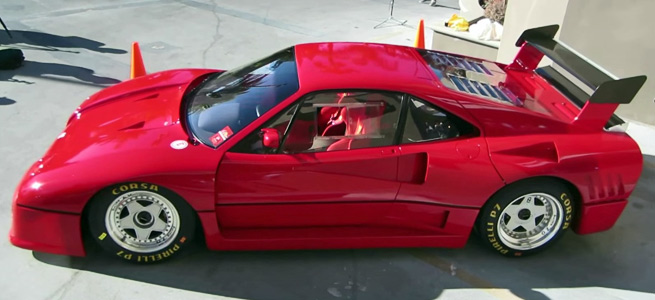
The highest form of the legendary Ferrari 288 GTO, the Evoluzione could be considered an old-school version of the FXX(K) cars. Take the “regular” 288 GTO, turn the boost way up until you get 650 horsepower. Throw two massive intercoolers at it so it doesn’t blow the F up, and release on the unsuspecting public. Oh, and it might even be better than the F40, as this Evo sits at under 2,100 lbs.
BUGATTI VEYRON
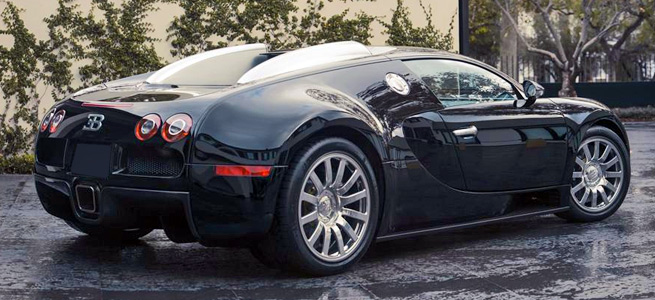
The massively hyped World’s Fastest Car deserves a place on this list (and many others) by default due to its extreme engineering and insane 267 MPH top speed, in Super Sport trim. While a “base” Veyron is an impressive car, the Super Sport turns up the heat on the quad-turbo 8.0L W16, so unlike those filthy proles with only 1,001 hp, your SS cranks out 1,200 hp and 1,100 lb/ft. It’s fit for Dubai. Which is good, because that’s one of the few places on earth with really long, flat roads and cheap, good fuel. It’s also super hot, but who cares when you have 10 radiators?
RS200
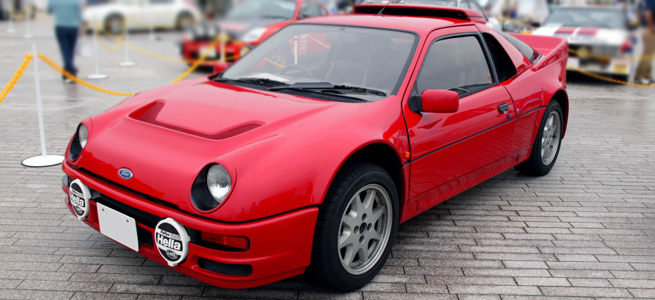
Any Group B rally car is a legend, and likely worthy of being on this list. We had to choose only one though, and thoughts went to the Ford RS200. It wasn’t the fastest or most competitive car back then, but the production version proved that street legal racecars still happened. The Ford/Cosworth turbo 1.8L makes a seriously impressive 180 horsepower, which was equivalent to V8 pony cars of the time. Crank up the boost on that Garrett T3, and you’ll get well over 400 hp.
959
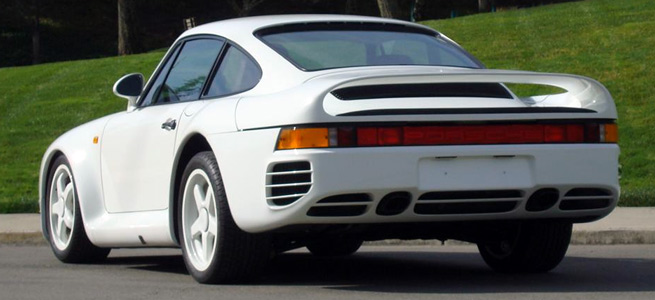
“How far can we take the 911?” asked the top brass at Porsche. In the ‘80s, the answer was always “until the coke runs out.” They apparently had quite a bit, as the Porsche 959 is the ultimate lightweight, mega-power 911. With an aluminum body, early composites in the chassis, and a twin turbo 2.85L flat six, the 444 horsepower 959 took the title of fastest car on earth, and flat out embarrassed every other supercar to that point. Don’t bother checking eBay, they rarely come up for sale.
GNX
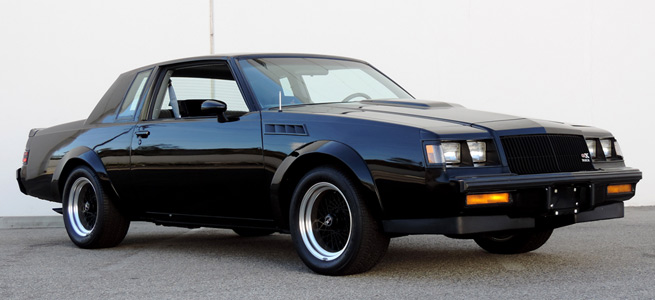
The Buick Regal was an antiquated relic by 1987, kinda like the rest of Buick. Then, someone had an idea. Unlike the thoughtful approach by Porsche, no one said “How far can we take the Regal?” Instead, it was more like, “F**K it. Let’s throw a turbo at it.” The 3.8L V6 suddenly came alive under boost, and while the Grand National and GNX were rated at 276 horsepower, it was actually an even 300 hp and a staggering 420 lb/ft. “Darth Vader’s Car” introduced American gearheads to forced induction cars crapping on n/a V8s.
F40
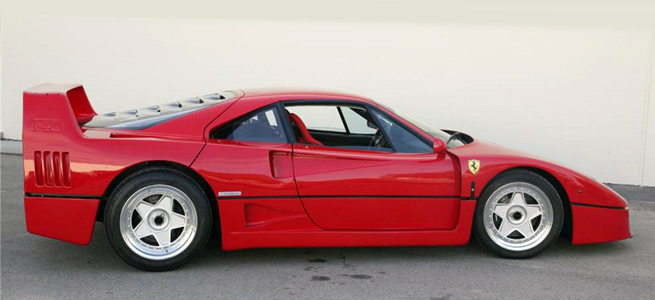
A logical next-step from the Ferrari 288 GTO, the F-40 was a full on club racer designed for the enthusiast. A 2.9L V8 stuff mid-ship delivers an incredible 471 horsepower thanks to two big turbos. That’s more than the expensive 959. Surprisingly, it got mixed reviews in the press, but eventually became a legend thanks to dreamy bedroom posters and Hot Wheels. The spartan street car is a pain in the butt to drive, but the performance focus never wavers, and represents Enzo’s final middle finger to Lamborghini.
911 TURBO
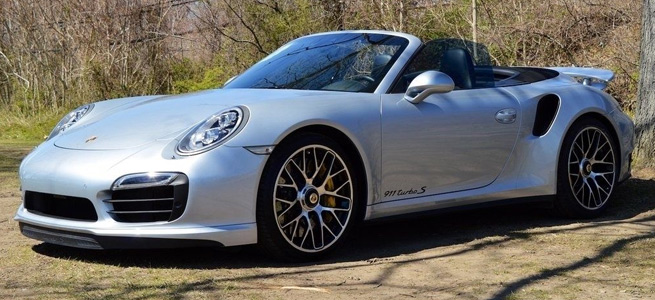
This nicely styled VW couldn’t hang with sports cars until Porsche threw a turbo at it, and created an icon. The original ‘70s air-cooled terror offered tons of character and surprising turbo lag. The 911 GT1 was competitive against the McLaren F1 GTR. The 911 was universally voted one of the top “Cars of the 20th Century,” and #TurboTuesday on Twitter is almost exclusively a worldwide 911 trend. When you hear the word “turbo,” odds are you’re picturing a 911.
The good news is we are currently trending towards more turbocharged cars on the road, from the Chevy Malibu, to the Ford F-Series. Sure, they’re mostly pedestrian cars, and not turbo icons, but they just may introduce some young gearhead to automotive driving and modifying fun. With the number of solid turbocharged vehicles that have been produced through the years, it’s difficult to narrow it down. Tell us what you think deserved to also be listed as an iconic turbo car. MR2 Turbo? H1 Turbo Diesel? Other?

